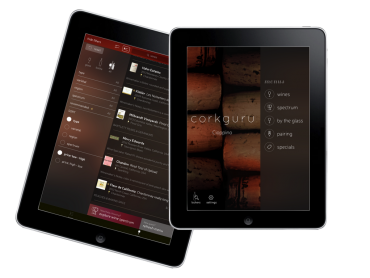In Vino Veritas Part VI – Whiskeys
I know what you’re thinking: another chapter in a series not related to wine – the ‘vino’ part of the title. Why are whiskeys relevant? In same vein as micro-brewed or craft beers, they’re in vogue. Irish, scotch, bourbon or rye; single malt or blended; people are on the hunt for exotic breeds and aromatic flavors. A cursory glance of the web will tell you that distillery locations are as diverse and globetrotting as appellations.
If you can feed the need, this may become a powerful revenue stream for your F&B. Let’s review some of the corollaries of investing in your whiskey selection. And, as always, please don’t drive and drive.
1. Rarity. It doesn’t take a lot of research to stock Johnny Walker Blue Label on the shelf – an expensive but nonetheless outstanding blended malt. As an alternative, how about offering Nikka from the Barrel, a blended whiskey…from Japan? Think about this in terms of the uniqueness of the drinking experience. If a whiskey brand is offered everywhere, it won’t contribute to an experience that’s anything out of the ordinary. Offer a rare elixir to make the occasion that much more exceptional.
2. Rapport. Whiskeys, like wine, require cajoling. If you expect people to throw their doubloons on these brown liquors, you’d best keep your bartenders and waiters in the loop. Give them the knowledge to offer legitimate recommendations, which will in turn enable longer, healthier conversations to flourish, augmenting the overall guest experience.
3. Markup. Straightforward as it comes – whiskey by the glass can run up quite the bill. The more esoteric you get, the more opportunities you’re giving customers to experience something apart from the staple (and comparatively inexpensive) brands like Wild Turkey or Canadian Club. If you’ve taken the time to assemble a formidable whiskey collection, people will take the time to explore that ensemble. And heck, they may get a little adventurous with their wallets, too.
4. Prestige. Unlike craft beers that may only be an additional talking point for guests and wait staff, brandishing the title of ‘Scotch Bar’ or ‘Bourbon Tavern’ has a lofty, patrician aura to it. Wine will typically be a secondary consideration for patrons to your restaurant – the cuisine almost always rests at number one – unless, of course, you’re renowned for housing an exhaustive cellar (no small feat I might add). Inspired whiskey selections are for the true connoisseur. Such consumers will seek you out, appetizers and entrées optional. It’s a niche market, but it’s growing.
5. Presentation. Heavy markups may intimidate patrons away from a purchase. Whiskeys have a long shelf though, so it’s not like you have to fret over spoilage. That leaves plenty of half to three-quarters filled bottles on the shelf, and when arranged together with the right lighting, it can amount to one very impressive display. Imagine the typical bar, stocked with the usual suspects for rum, vodka, tequila and gin. Yawn. Now add 100+ additional bottles of whiskey, all with artistic labels and distinctive glass designs. Wow. The example in the above picture is of Mr. Frank Grosser, Scotch Specialist at the ‘On the Rocks Lounge’ at the Wickaninnish Inn, located in Tofino, British Columbia, Canada, to give you an idea.
6. Pairings. Everyone loves a good pairing. Just as revamping your wine menu is a chance to revitalize your gastronomic exhibition, the same goes for your liquors. Have fun with it. The peat-smoked zing of a fine Scotch matches exquisitely with some salty charcuterie while the dry bite of a Kentucky bourbon pairs nicely with a tapas-style spread of cool dips and olives. Again, rapport plays a part here, as educated wait staff will always be a cardinal element towards customer satisfaction.
7. Glassware. Top-flight products deserve something better than a half-dollar ‘Libbey glass’, with no disrespect of these excellent everyday glass tumblers. Consider martini bars. It’s all about the details: an elongated bowl, a twist in the stem, an array of tinted glasses to offset the different colors of each concoction. Transfer this thought process to whiskey. Thick cut glass and crystal tumblers will extend your bar’s quality aura – even if it’s only by a touch, but these tiny touches will contribute to a greater whole.
8. Water. Many whiskies are consumed with a drop of water to bring the flavor out. Others like ice. Still others use ‘scotch rocks’, which are stones shaped like ice cubes that are frozen, chilling the beverage without the dilution. Regardless of preference, this is not a tap water situation. Consider distilled water in bottled form to give assurance to patrons. This aura of quality even extends to the shape of ice cubes your machine makes – another opportunity for a unique mark.
9. Copy. Give your patrons something to read while they indulge themselves – it’s entertainment after all. Think tasting cards with brief blurbs on every spirit’s history and what flavors to expect from each little sip. Yet another tiny touch to append the overall guest experience. Consider integrating these factoids into the menu, but only if it doesn’t bring on a cluttered read.
10. Constituency. Support your local producers, nuff said. Although this might not bear fruit for those outside of Kentucky or Scotland, do your research as you never know who has recently started roasting barley within a 100km radius. Yes, this is a chance to develop a relationship with a new supplier, and, yes, this is something to boast about. Guests at your hotel crave the local flair, so strive to deliver wherever possible.




